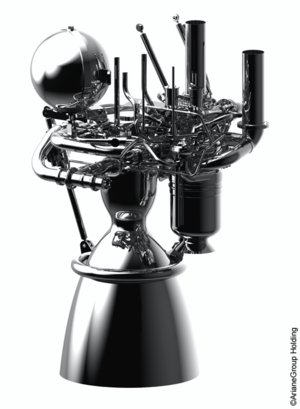ESA’s Digital Twin Earth programme: building a virtual model for a changing planet
ESA’s Digital Twin Earth (DTE) programme is an initiative that merges advanced satellite data with cutting-edge technology to create virtual replicas — or digital twins — of Earth’s systems.
These digital twins are more than simulations — they are tools that allow scientists, policymakers, and other stakeholders to monitor and predict environmental changes in ways never before possible.
By combining data from space with artificial intelligence and advanced modelling techniques, the DTE programme offers new possibilities for tackling critical challenges, from climate change to urban development.
Objectives of the Digital Twin Earth Programme
The DTE programme aims to pave the way for a new generation of Earth observation capabilities. It focuses on integrating the latest Earth observation-based products, scientific advancements and research and development results into pre-operational digital twins. These digital twins are designed to replicate and simulate the behaviour of Earth's systems with remarkable precision.
ESA’s primary goal is to demonstrate the value of digital twins for a wide range of applications, such as climate monitoring, disaster response and urban planning. By doing so, the programme supports European and national initiatives, including the ambitious Destination Earth (DestinE) project, which aims to develop an operational digital model of the planet.
How the programme works

The DTE programme operates through three key components: a foundational framework, Earth observation digital twin components, and collaboration with national and European initiatives.
The ESA DTE Framework provides the tools and infrastructure necessary for creating digital twins. By leveraging AI and innovative data processing technologies, the framework simplifies the entire lifecycle of digital twin development, from design to implementation. Moreover, it integrates data from ESA’s Earth Explorer missions into the DestinE platform, which serves as the foundation for building, testing, and deploying digital twin services.
One of the framework’s highlights is the DestinE Streaming service, which optimises access to the vast quantities of data produced by digital twins.
Using technologies inspired by video streaming, this service makes it easier for researchers and developers to analyse data and apply it to their projects as less storage is needed for these usally large data sets. Another component is the Synthetic Scene Generator, which creates realistic 3D satellite sensor simulations, providing detailed datasets for various uses. These two services are developed within ESA DTE but will be also operational services on the Destination Earth Platform for a wide range of users.
The core element of DTE are the Earth Observation Digital Twin Components (EO DTCs) which are focused projects that demonstrate how Earth observation data can be used to simulate different aspects of Earth's systems. These digital twins dynamically reconstruct and simulate elements such as forests, hydrology, agriculture, ice sheets and coastal processes, providing actionable insights and enabling ‘what-if’ scenario modelling.
Each component is developed collaboratively by scientists, technology experts, and stakeholders to ensure practical applicability.
Integration with Destination Earth
The DTE programme is closely linked to the EU’s Destination Earth initiative, which aims to develop an operational digital replica of the entire planet.
By collaborating with DestinE, ESA ensures that the digital twins it develops can transition into larger operational systems, maximising their impact. The programme also benefits from DestinE’s powerful computational and data-sharing infrastructure, enabling more efficient development and broader accessibility.















 Germany
Germany
 Austria
Austria
 Belgium
Belgium
 Denmark
Denmark
 Spain
Spain
 Estonia
Estonia
 Finland
Finland
 France
France
 Greece
Greece
 Hungary
Hungary
 Ireland
Ireland
 Italy
Italy
 Luxembourg
Luxembourg
 Norway
Norway
 The Netherlands
The Netherlands
 Poland
Poland
 Portugal
Portugal
 Czechia
Czechia
 Romania
Romania
 United Kingdom
United Kingdom
 Slovenia
Slovenia
 Sweden
Sweden
 Switzerland
Switzerland



























